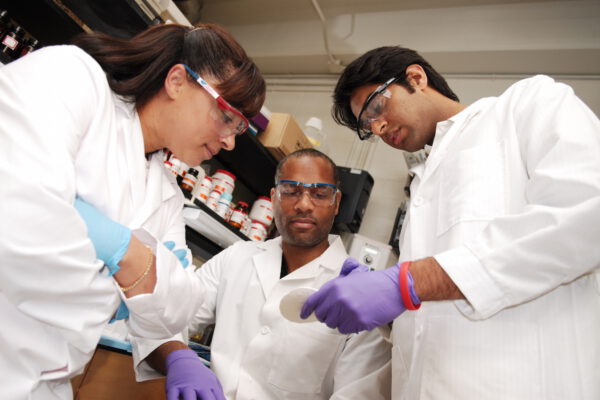ACE2019: Creating, Calculating, and Communicating the Value of Higher Education
“When I think about the value of higher ed, two questions come to mind. If I send my daughter or son to college, or I go myself at a cost to my family or me, will I learn something of genuine value? Second, will I finish? Will I get a credential that means I’ve earned something of genuine value?” Kevin Reilly, president emeritus and regent professor at the University of Wisconsin System, posed these questions at the start of the session “The Three Cs: Creating, Calculating, and Communicating the Value of Higher Education” at ACE2019.
In the session, panelists discussed how a commitment to instructional quality generates educational, financial, and reputational value. They asserted that we create value for our students every time they experience powerful teaching and learning and, upon graduation, send into the world champions of our value.
“Our view is that value is created in the moments when students and faculty engage in inspiring teaching and learning,” said Penny MacCormack, chief academic officer of the Association of College and University Educators (ACUE). “When a student suddenly understands a complex problem, is pushed to think more critically, when a student develops these skills that will be valuable to them for a lifetime, that’s where value is created.”
MacCormack described how ACUE works in partnership with colleges and universities nationwide to prepare, support, and credential faculty members in the evidence-based teaching practices that promote student engagement, persistence to graduation, career readiness, and deeper levels of learning. Faculty who satisfy the requirements of ACUE’s courses in effective teaching earn certificates in effective instruction endorsed by ACE. Ongoing efficacy studies with partners nationwide are showing stronger student engagement, improved grades, and closed achievement gaps.
Kevin Carman, executive vice president and provost at the University of Nevada, Reno, described how his university’s partnership with ACUE has changed the culture around teaching and learning, as well as what it signals to both faculty and students. When hiring new faculty, Carman said, he asks them to talk about teaching, given it has traditionally received such little attention but is “fundamental” to the student experience.
“What’s the value of teaching at a research university? The challenge of the narrative at a research university is convincing faculty that you value teaching. We want people who value teaching and love teaching. We wanted to send a message that we value teaching, and the investment in ACUE was a tangible indicator of that,” Carman said.
Communicating that message to faculty, students, parents, alumni, the community, the media, and other stakeholders is often seen as an “afterthought,” according to Robert Johnston, senior vice president of The Hatcher Group. However, he asserted that communications must be deliberately planned and woven into the programming. Institutional leadership must work hand in glove with their communications departments to capitalize on “authentic opportunities” to share their stories. He presented an exemplar from Sam Houston State University, which developed a designated ACUE Fellows web page featuring a custom video with faculty testimonials about their partnership with ACUE.
“Colleges today need to be their own news bureaus,” Johnston stated. “The good news about being your own news bureau is that you have more options to share your story than ever before. . . . If you value the relationship between faculty and students and the need to help every student succeed, that trickles down, and people begin telling your story for you.”
Ultimately, Johnston affirmed, it’s about institutions communicating that they care about and are making a long-term commitment to students, which starts with and must continue to be vocalized by institutional leaders.
“The value of the relationship between the quality of instruction and what happens between the faculty and the student has to happen at the highest level,” Johnston said. “When these messages come from the top, it gives others the mandate to follow through.”

—Julie Candio Sekel
If you have any questions or comments about this blog post, please contact us.


